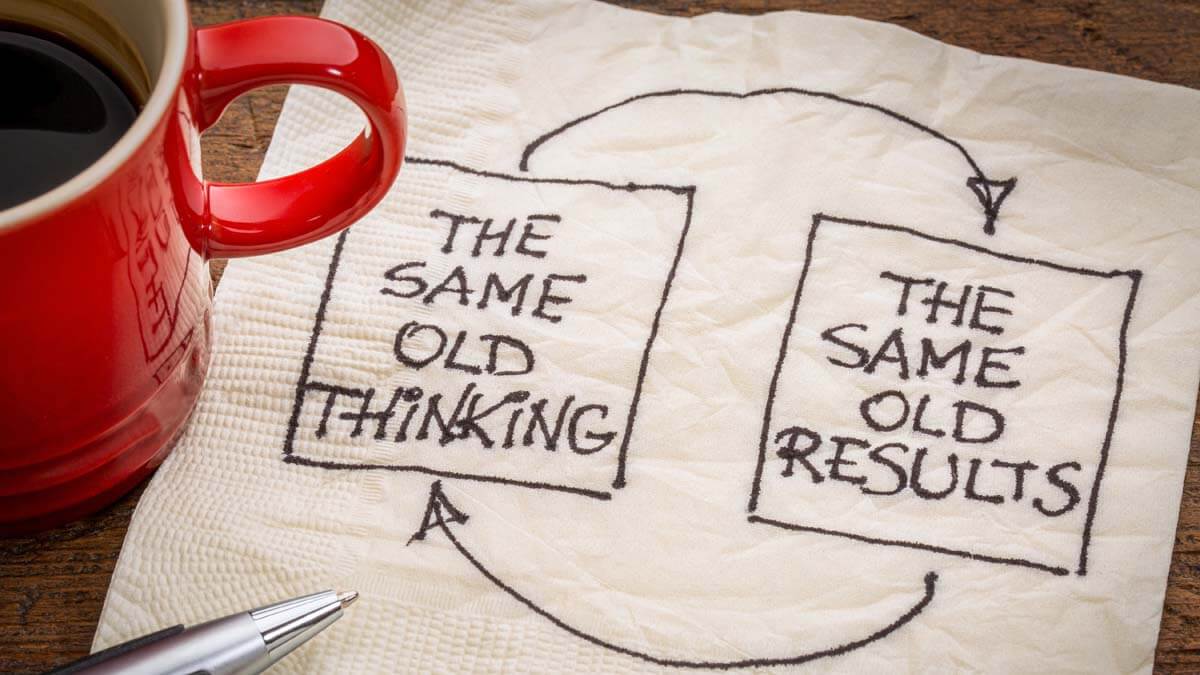Most of their thinking goes into adjusting their hardhats. Too bad: Tour insights provide great context for interviews… and your “fresh eyes” may yield ideas for improvement. You might see what everyone else has seen, but think what no one else has thought. You just need to learn the proper skills to do this.
More in 2-minute growth video #33, Conduct B2B customer tours
For every job a customer does, there are dozens of potential outcomes… so diverge with customers to uncover far more than competitors. Then ask for 1-10 importance and satisfaction ratings so your R&D can converge on the important, unsatisfied outcomes… while competitors guess. I’d like to make this sound more complicated, but it’s not.
More in white paper, Market Satisfaction Gaps
Innovation is fueled by the unexpected. But many suppliers are surprise-averse. They start with their own ideas, filter them through internal processes, and avoid customer-led interviews. In an odd twist, surprise-averse suppliers are the most likely to be surprised… by mistaken market assumptions and blockbusters introduced by surprise-seeking competitors.
More in 2-minute growth video #25, Let your customers surprise you
Your B2B customers have a long list of problems to be solved. But it’s not their job to carefully explain each one and deliver it gift-wrapped to your solution providers. It’s your job. When your sales professionals probe deeply and capture customer needs uniformly in your CRM, you’ll gain unprecedented market insight. And by probing well, your sales team will sell more. We call this Everyday VOC.
More in Everyday VOC white paper, www.EVOCpaper.com
When you validate your new product concept with customers, they may tell you if it’s a dud. Great… you’ve avoided the error of commission. But what about the error of omission? If you first enter the customer’s world with B2B divergent interviews, you might learn of unexpected needs that lead to a blockbuster.
More in white paper, Lean Startup for B2B (page 9)
A Landmine can kill your project… but who steps on a Landmine they can see? When you convert assumptions and questions into facts, you make landmines visible and therefore harmless. A Launchpad is an unexpected, high-value customer outcome. Discover these before competitors to develop solutions in a “competition-free zone.” This approach is perfect for your Horizon 2 and 3 projects.
For more, see 5-minute video at www.deriskprojects.com
Why have CRM systems underwhelmed? It’s not due to poor software design, but rather poor implementation. If we’re honest with ourselves, it’s the way we fickle humans use CRMs. If we’re counting on more reliable humans to deliver more successful CRM results, we’re likely to be disappointed. Why is highly successful CRM performance such a ... Read More
Surprises in quality or cost control are unpleasant. But innovation relies on surprises. Without “non-obviousness,” an invention cannot even be patented. When a previously hidden customer outcome becomes known, the discovering supplier has the luxury of seeking solutions in a competition-free environment.
More in 2-minute growth video #25, Let your customers surprise you
The research on B2B sales call preparation isn’t encouraging: 75% of B2B executive buyers say salespeople are not knowledgeable about their business… and do not understand the issues they face. Unsurprisingly, only one in four salespeople get agreement from these buyers to meet again. AI can help salespeople prepare in two ways: 1) rapid pre-call customer reports, and 2) role-playing their conversations with an AI agent.
More in white paper, Sales Call Preparation with AI
Neither will customers pay you for a product they don’t need. I call this new-product failure mode, “Nice shot, wrong target.” It is far too common. Most customers really do have something “broken” that needs fixed. Figure out what this is before you design your next new product, and they’ll pay you handsomely.
More in white paper, Guessing at Customer Needs
One is throwing more money at R&D in a Soviet-style arms race. Another is exhorting the troops to do better. An all-time favorite is asking tough project-review questions… but not training teams in the skills needed to find the answers. What if all your teams had the highest possible skills in understanding customer needs? Might this work better?
More in e-book, Reinventing VOC for B2B
Ever watch stage-gate reviews or entire workshops wrestling with The Value Proposition? It’s not pretty. In my experience, good B2B customer interviews yield potential value propositions like so many ripe apples falling from a tree. You just need to pick which to pursue. If you need to dream up value propositions, you’re climbing the wrong tree.
More in white paper, Guessing at Customer Needs
Does your operating plan call for profitable growth in 2025? How will you achieve it? You could use your old playbook… or employ AI, arguably the biggest game-changer in decades. Let’s look at four ways to use AI for growth-driving competitive advantage. You can use AI to boost efficiency or effectiveness. Said another way, you ... Read More
Instead, ask the right questions about your customer’s problems. The consultative selling movement was given a major boost in 1988 with Neil Rackham’s ground-breaking research in SPIN Selling. By observing more than 35,000 sales calls, they established that the most successful salespeople ask great questions. Decades later, we had our own question: Are some questions more likely to drive sales? (The answer is “yes”!) We surveyed 396 B2B sales professionals with over 6,000 years of combined experience concerning 12 voice-of-customer skills.
Download AIM Institute research report, VOC Skills that Drive B2B Sales













